MedievalReporter.com
Covering history's most marvelous millennium
Join our newsletter!

Covering history's most marvelous millennium
Covering history's most marvelous millennium
The Knights Hospitaller were a sovereign military organization of great prestige. Comparable to their “competitors” the Templars, they controlled land, castles and soldiers in the Holy Land. Both orders were somewhat of a private army, but unlike certain mercenaries, they were disciplined, well-organized and shot through with crusader zeal.
The Hospitallers started as a medical organization looking after injured crusaders – hence the name. But by order of the pope, they transformed themselves into a ferocious fighting force, forming a formidable foe for their muslim enemies.
This is a short intro from our Medieval Guidebook. Dive deeper into the subject by reading our articles about it.
The Knights Hospitaller were founded in the wake of the First Crusade, which terminated in 1099 CE. With Jerusalem now in christian hands, the Hospitallers chose this holy city as their first headquarters. They built a hospital in the city to take care of wounded crusaders.

The Hospitallers weren’t the first to erect an infirmary in Jerusalem. The pope had already commissioned one all the way back in the 7th century. Frankish emperor Charlemagne had even financed an expansion of the estate. The muslims left the christian complex largely intact when they conquered the city. But roughly a century before the Crusades, an infamous caliph had the hospital destroyed.
To provide the Hospitaller order with funds, the newly-formed Kingdom of Jerusalem awarded them with lands and territories. Thus, from its not-so-humble beginnings, the Hospitallers swiftly became a sovereign power – a “state within a state”. The possession of territory also meant that they needed to protect it, so they started recruiting and training knights. Continuing this “mission creep”, Hospitallers soon started providing armed escorts to cured patients on their way home. Outside the safe confines of their hospital, this led to skirmishes and even small-scale battles with muslim enemies roaming the area.
So, the Knights Hospitaller’s second grandmaster was already in the position to formally offer his order’s military services to the King of Jerusalem. The muslims in the Middle East had just gained another powerful enemy.
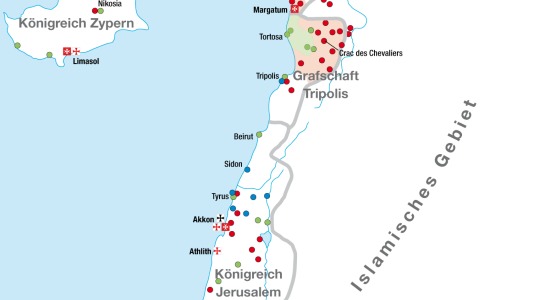
The Knights Hospitaller were commanded by a Grand Master, followed by a Grand Commander. The third highest rank was that of Marshal of the Hospital, who acted as a quartermaster-general of sorts. Below that, the Order was organized into three ranks: knights, men-at-arms and chaplains. When the military needs were high, “external” knights were allowed to join the Order for a campaign or two. They were called secular knights and ranked below the “professed” knights, the ones who had pledged their life to the Hospitaller cause.
One joined the Knights Hospitaller by simply turning up at the headquarters and submitting to join. However, as easy as that sounds, this decision was irreversible: once a Hospitaller, always a Hospitaller. Also, as prestigious as joining a military order might have sounded, life inside was anything but glamorous. Upon joining, Hospitallers took vows of chastity, poverty and obedience as well as pledging to protect pilgrims and to fight infidels – possibly leading to early death. On top of that, medical services – in an age before clinical hygiene, antibiotics, and so on – remained an integral part of Hospitaller service.
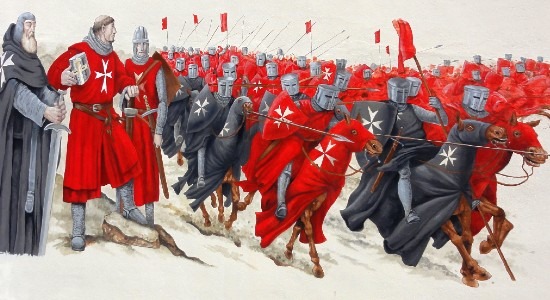
Once they entered the battlefield, though, the Knights Hospitaller made for an impressive sight. Donned in black or red, emblazoned with a white cross, the ranks of the Hospitallers contributed to many crusader victories. They assisted with the taking of Ascalon from the Egyptians and were part of a large christian coalition that triumphed over the muslims in Southern Spain. At the height of Jerusalem’s might, the Hospitallers controlled seven great forts in the Holy Land, such as the famous Krak des Chevaliers.
But, in hindsight, the clock was ticking for the Crusader States: its enemies were gathering in numbers that could turn the tide.
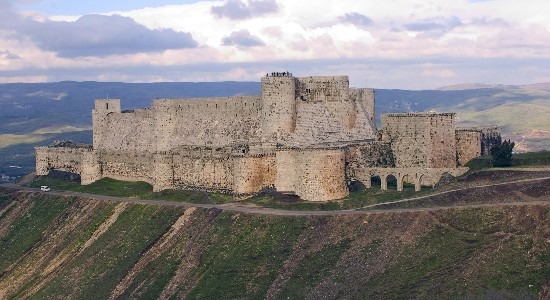
– advertisement –
– article continues below –
In a sense, yes.
Turning back to the Kingdom of Jerusalem, sultan Saladin managed to unify both Egypt and Syria under his rule. He now threatened the Crusader States from two sides. In 1187, despite unprecedented Hospitaller and Templar assistance, Saladin scored his most famous achievement: the muslim reconquest of the Holy City (Jerusalem). Afterward, the Hospitallers lingered in the Levant as the christians slowly got pushed to the Mediterranean Sea. They managed to hold on to their famous Krak for more than eighty years after the Fall of Jerusalem.
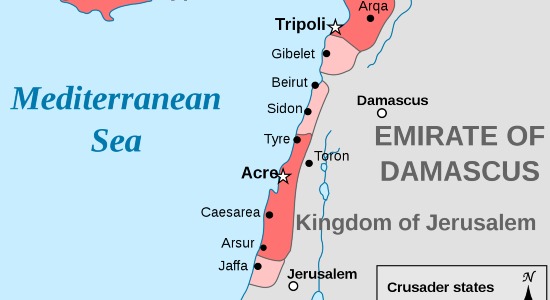
Nevertheless, in 1291, the last Crusader city fell. Saladin’s successors had driven the christians, and the Hospitallers with them, back to the west. In search of a new home, the Hospitallers moved to Cyprus but didn’t like the place. So their grandmaster devised a devious plan: they would snatch the island of Rhodes from the Byzantine Empire, who were too pre-occupied with Mongols and Turks invading Anatolia. After four years of campaigning, the island finally surrendered.
In the end, the Hospitallers stayed on Rhodes for over 200 years. They even expanded into Anatolia themselves but were – once again – driven back into the sea by muslim warlord Timur. By the end of the Middle Ages, after the Ottoman sultan conquered Constantinople, he moved against Hospitaller Rhodes in great numbers. Despite a valiant defense, the Knights were overwhelmed and had to flee west again. They found temporary refuge on Sicily, then settled permanently on the island of Malta.
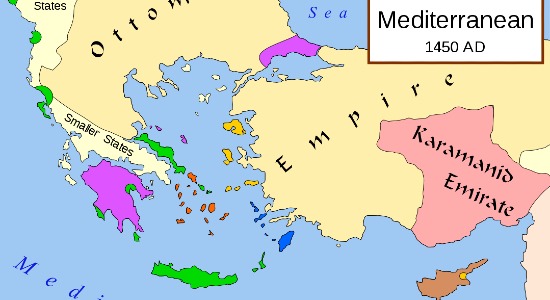
Enraged to see the Order resettled, the Ottomans moved against Malta. By now one of the great powers of Europe, the sultan was again able to send a vast host against the Hospitallers. A desperate siege ensued but this time, in contrast to the events on Rhodes, the Turks lost. It might have been the last military confrontation where an army of knights was victorious. The Order was spared, for now.
On Malta, with the hospital in Jerusalem far out of sight, the Hospitallers became known as the Order of St John, or simply as the Knights of Malta. They grew extremely wealthy while there. The Knights raided Ottoman shipping whenever they could and even expanded into the newly-discovered Caribbean. But, around 1800, events in France influenced everything in Europe and thus Malta, too. Napoleon conquered Malta on his way to Egypt and drove the Knights out.
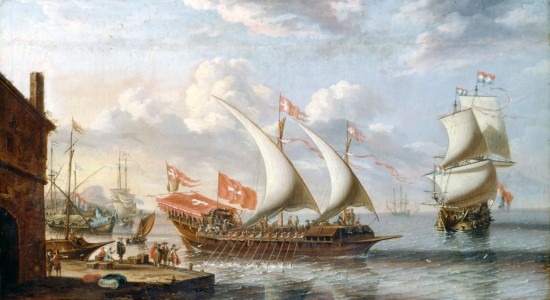
Interestingly, the Swedish government offered the island of Gotland but the Order declined. The Russian czar welcomed many Hospitaller refugees and officially recognized their organization as a Russian Imperial Order. This led to Hospitallers in St Petersburg acknowledging the czar as their new Grand Master. However, as an extension of the Great Game, the British disputed this claim. Over time, the papacy grew resentful of the Russian appropriation of the Hospitallers as well and reinstated the organization in Rome as the Sovereign Military Order of Malta in 1834.
As the world’s oldest surviving chivalric organization, the order now:
The Knights Hospitaller indeed have come a long way since building an infirmary in Jerusalem in 1099 CE.
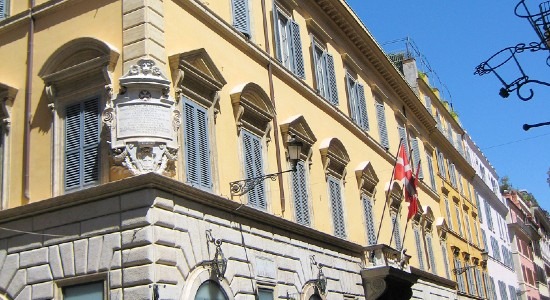
Disclosure: we work hard to provide you with exclusive medieval reports and guides. To make the Middle Ages accessible to everybody, we’d like this information to remain FREE. Therefore, some of the links below are affiliate links, meaning – at no additional cost to you – we will earn a small compensation if you click through.
Grab short intros on other military matters from our Medieval Guidebook.